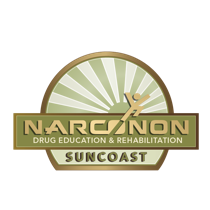At Narconon Suncoast, we often help people who suffer from addiction to opiates and opioids – prescription or otherwise. Hydrocodone is the most frequently prescribed opioid in the US, and has recently gone under review by the Food and Drug Administration due to the large amount of hydrocodone abuse there is in the US.

Before we discuss the recent news about hydrocodone, we wanted to talk about what Hydrocodone is.
Hydrocodone comes from opium. It is actually a synthetic drug. Synthetic simply means it was made by man. Man took part of opium and changed it chemically in a laboratory. The result was Hydrocodone. Because it is synthetic and part-opium, it is generally called an opioid. It, like many opioids, is most often prescribed for pain. Hydrocodone is usually mixed with other drugs and can often be found in drugs like Vicodin, Lorcet, Zydone, Vicoprofen, Allay, and Lortab.
Since hydrocodone is mixed with other drugs to make the brand-name drugs, different drugs can have different side effects – for example, Vicodin also has acetaminophen (aka Tylenol) in it, and side effects of Tylenol include stomach problems. However, here are some of the side effects that are common to most drugs containing Hydrocodone: low blood pressure, drowsiness, weakness, loss of consciousness, muscle pain or spasms, trouble breathing, confusion, depression, loss of appetite, kidney problems, mood changes, collapsed lung, hallucinations, anxiety, insomnia, addiction, and more.
Because hydrocodone is addictive, it gets sold on the street. Some of the street names for this drug are: Vike, Vic, Watson-387, Hydro, Norco, and more. When abused, it gives the user a feeling of extreme happiness, makes them feel sedated, and more. It’s a “downer”, so it is very dangerous to mix with other drugs – especially other downers like alcohol, sedatives, tranquilizers, etc. Anything that will slow down a person’s breathing is dangerous to take with hydrocodone. It also does not mix well with anti-depressants and it can cause unpredictable behavior in a person taking anti-depressants.
Hydrocodone by itself is a Schedule II drug, which means that it has a high potential for abuse and may lead to severe psychological or physical dependence. This is the same schedule as drugs like oxycodone, fentanyl, morphine, and codeine. Hydrocodone is sometimes prescribed straight (with nothing mixed in), but most often it is prescribed as a brand-name drug with another painkiller mixed into it. When hydrocodone is mixed with another drug like acetaminophen (brand name: Tylenol), the drug that gets made (Vicodin) becomes a schedule III drug, because the hydrocodone is diluted, and Tylenol is considered far less addictive.
A vote recently happened in the FDA on whether or not Vicodin and other painkillers containing hydrocodone – which are currently considered schedule III drugs – should be moved up to schedule II due to the amount of people addicted to drugs containing hydrocodone.
While, from all reports, the vote to move drugs containing hydrocodone into the schedule II category was positive, there is still a lawmaking process to go through. However, we hope the addictive drugs which have hydrocodone in them are restricted to schedule II, which will make them harder access and restrict the type of doctors that can prescribe the drug.
The FDA is taking just one step in addiction prevention by reducing access to drugs containing hydrocodone. However, what about those people who are already addicted to Vicodin or other drugs? We can help. If you know someone suffering from addiction to opioids or opiates, or you are suffering from addiction, contact us today. You can call us confidentially at 877-850-7355.
Refs: Suboxone.com, DEA, Arizona Daily Star, Los Angeles Times
